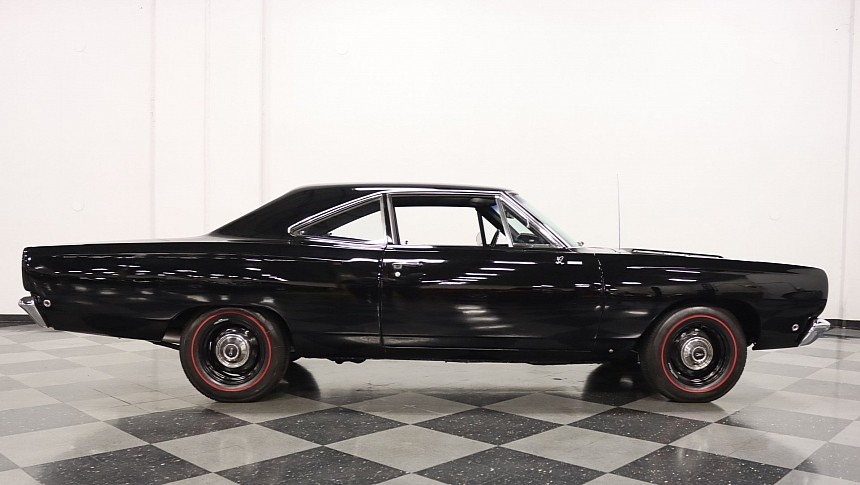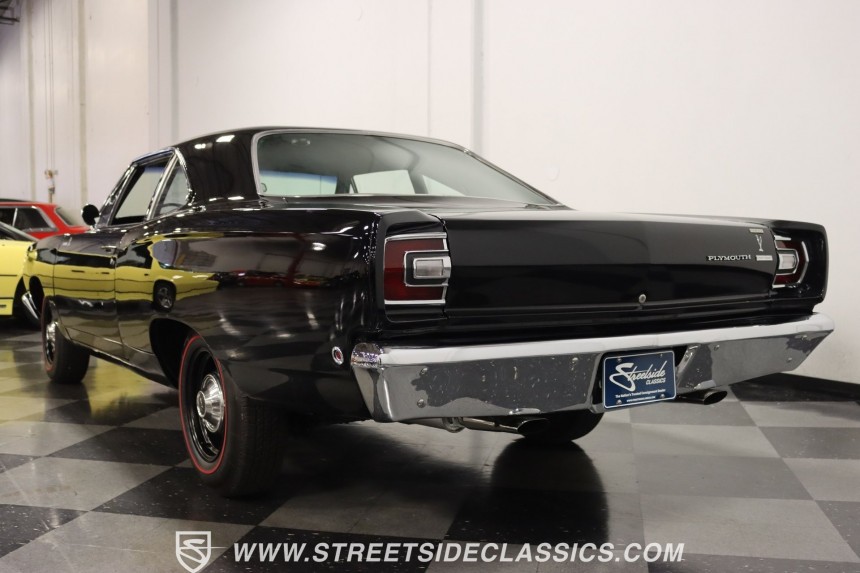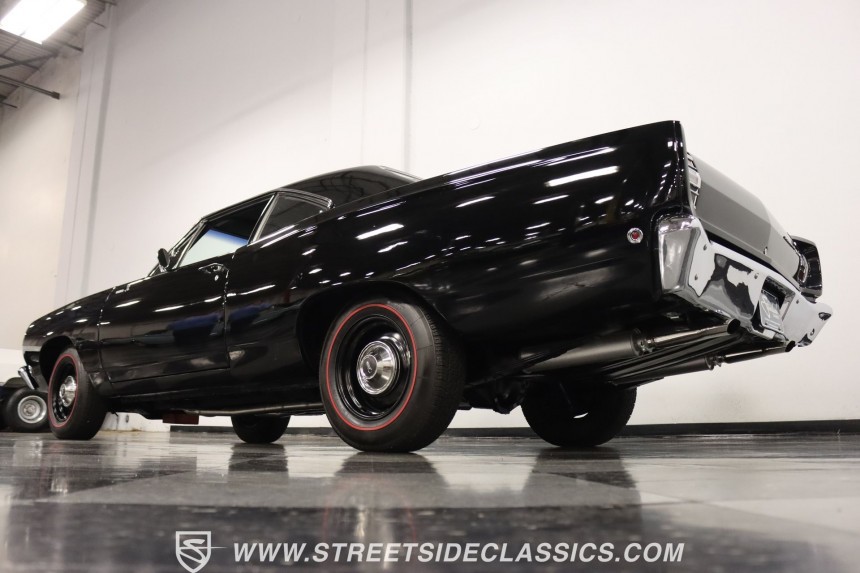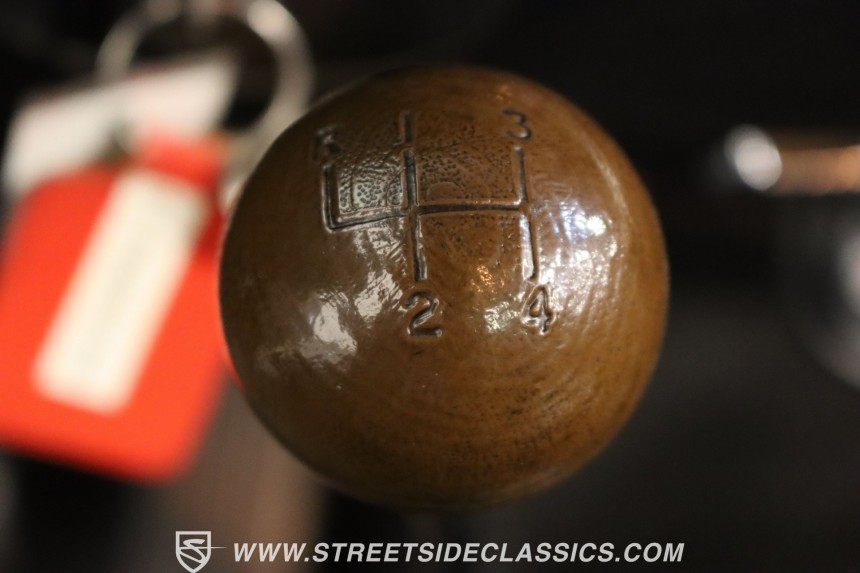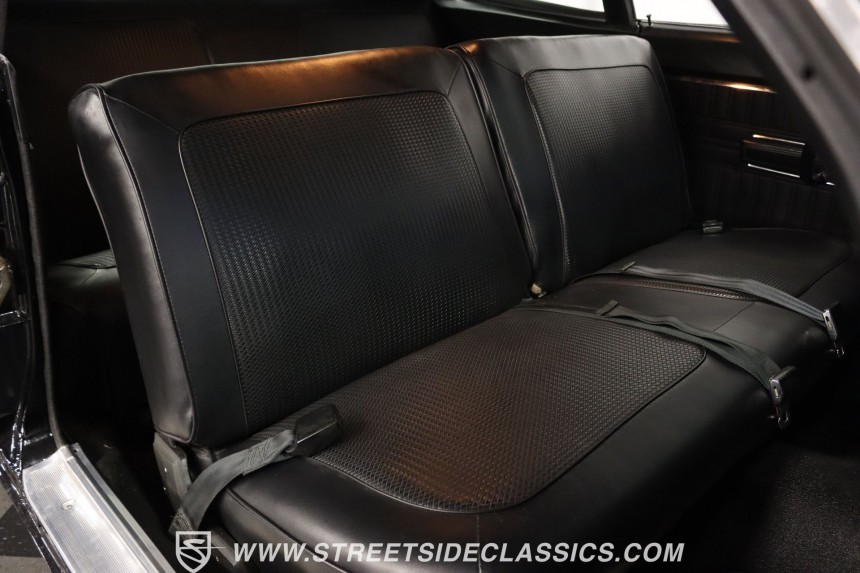With 1,109 built for its inaugural year, the 1968 Road Runner HEMI was the average Joe’s most popular muscle car at a low buck. Out of the total production of the elephant engine of 2,428 blocks, the remaining 1,319 were dispersed among the other Ma’ Mopar children. Even so, a factory-equipped 426 cubic-inch Road Runner is going to pony up a pretty penny.
Plymouth took a good look at what General Motors was cooking in the Central Office Production Order stove and came up with something far less bureaucratic. Instead of putting the buyer through the haggling and hassling procedure of checking option boxes on an order form, Mother Mopar did the exact opposite.
The company offered a bare-bones, bare-knuckles fist fighter with very few add-ons to keep the price down. The notable exception to this rule was the 426 cubic-inch optional extra, which was $714 in 1968. One could buy 25% of a standard Plymouth Road Runner for that money.
The rationale behind this low-price design was a double-win cost- and weight-cutting measure. On one hand, simplicity and lackluster meant affordability for the masses. On the other, it kept the weight down, stuffing the sleeve of the budget street fighter with a power-to-weight ace.
Despite the avian nomenclature of the automobile, the examples fitted with a hemispherical-heads eight-cylinder motor were anything but featherweight. At around 850 lbs (385 kg), it put some pressure on the front end of the 3,500 lbs two-door coupe (1.6 tons). So, it’s not that surprising that the worship-level V8 came in limited numbers.
And because the Road Runner got its name for one (very fast) reason, the HEMI-armed examples are going for good money today, depending on their state and, evidently, rarity. An all-original, unmolested example may be hard (although not impossible) to come across, but there are alternatives.
For example, a nice, restored Road Runner born with a 426 HEMI can go well above $100,000, even though the engine powering the car now is not the same big-block legend installed on the assembly line. It is, however, a first-year motor cast in 1966, so the car is just as much a HEMI as it was 55 years ago.
This particular example was finished on April 25, 1968, but it is the post coupe body style – the hardtop came along in December 1967 – and wore an Ember Gold Metallic body paint. As the gallery bluntly reveals, the restoration went to the dark side really fast, shrouding the HEMI Road Runner in a sinisterly attractive black color.
The Road Runner was the simpleton of Plymouth’s Mid-Size 5 offer from 1968; it was accompanied onto the stage of go-fast thrills and frills by its twin cousin, the high-trimmed GTX, the Belvedere, together with the Satellite and its Sport derivative.
Simpleton only referred to the creature comforts of the new-entry Mopar, but all resemblances to a taxicab ideology stopped at the firewall. The fast bird came with its exclusive 383 cubic inches big-block V8 (6.3 liters) decorated with a hot cam and heads borrowed from the 440 Super Commando (the 7.2-liter mastodont).
As a result, the low-profile Road Runner had 335 hp (340 PS) and 425 lb-ft (576 Nm) to tickle the rear wheels with. The numbers were impressive, but Chrysler also used a sneaky double standard to rate the engine’s performance. The power output was measured at 5,200 RPM – incidentally, the highest engine speed at which any Mopar of the era would have the horses advertised, 200 RPM above the hard-charging 426 HEMI elephant. The torque figure was calculated at 3,400 RPM, but it was identical to the standard 383 Commando (which yielded the same crank-spinning performance at 3,200 revolutions per minute).
Nonetheless, paper mathematics was as good as Wile E. Coyote’s futile attempts at putting the Warner Bros sprinting bird on its dinner plate. The Plymouth Road Runner was a summer job’s buy and a drag strip spend. Especially with the 425 hp from the HEMI, backed by a four-speed manual (with the optional Sure Grip to keep it straight on the road).
This article’s hero was born sporting the preferential differential with its 3.54:1 rear (the standard equipment for the HEMI was a 3.23). The patched-up first-year Road Runner currently puts down the 425 hp (431 PS) and 490 lb-ft (664 Nm) of the roaring HEMI through a Dana 60.
The power drum brakes received a fresh breath of life when the master cylinder and booster were rebuilt. Dog dish hubcaps, steel wheels, and red line tires. The muscle car society might have burst into laughter when the cartoon-christened Plymouth came out, but the joke was on those who made fun of it.
Like the ironically fast Warner Bros bird, the bare-bones Mopar didn’t play silly at all and didn’t play second fiddle to anyone. If anything, the Road Runner was the essence of high performance with little money, the spirit of what muscle cars had been born to be.
The example presented here asks for quite a premium - $146,995, making it one of the most expensive 1968 Plymouth Road Runners on the open market. With 71,833 miles on the clock (115,580 km) – and this number isn’t even a certainty since the selling dealer adds that True Mileage is Unknown – this HEMI Frankenstein might be chewing more than it can bite.
The company offered a bare-bones, bare-knuckles fist fighter with very few add-ons to keep the price down. The notable exception to this rule was the 426 cubic-inch optional extra, which was $714 in 1968. One could buy 25% of a standard Plymouth Road Runner for that money.
The rationale behind this low-price design was a double-win cost- and weight-cutting measure. On one hand, simplicity and lackluster meant affordability for the masses. On the other, it kept the weight down, stuffing the sleeve of the budget street fighter with a power-to-weight ace.
And because the Road Runner got its name for one (very fast) reason, the HEMI-armed examples are going for good money today, depending on their state and, evidently, rarity. An all-original, unmolested example may be hard (although not impossible) to come across, but there are alternatives.
For example, a nice, restored Road Runner born with a 426 HEMI can go well above $100,000, even though the engine powering the car now is not the same big-block legend installed on the assembly line. It is, however, a first-year motor cast in 1966, so the car is just as much a HEMI as it was 55 years ago.
The Road Runner was the simpleton of Plymouth’s Mid-Size 5 offer from 1968; it was accompanied onto the stage of go-fast thrills and frills by its twin cousin, the high-trimmed GTX, the Belvedere, together with the Satellite and its Sport derivative.
Simpleton only referred to the creature comforts of the new-entry Mopar, but all resemblances to a taxicab ideology stopped at the firewall. The fast bird came with its exclusive 383 cubic inches big-block V8 (6.3 liters) decorated with a hot cam and heads borrowed from the 440 Super Commando (the 7.2-liter mastodont).
Nonetheless, paper mathematics was as good as Wile E. Coyote’s futile attempts at putting the Warner Bros sprinting bird on its dinner plate. The Plymouth Road Runner was a summer job’s buy and a drag strip spend. Especially with the 425 hp from the HEMI, backed by a four-speed manual (with the optional Sure Grip to keep it straight on the road).
This article’s hero was born sporting the preferential differential with its 3.54:1 rear (the standard equipment for the HEMI was a 3.23). The patched-up first-year Road Runner currently puts down the 425 hp (431 PS) and 490 lb-ft (664 Nm) of the roaring HEMI through a Dana 60.
Like the ironically fast Warner Bros bird, the bare-bones Mopar didn’t play silly at all and didn’t play second fiddle to anyone. If anything, the Road Runner was the essence of high performance with little money, the spirit of what muscle cars had been born to be.
The example presented here asks for quite a premium - $146,995, making it one of the most expensive 1968 Plymouth Road Runners on the open market. With 71,833 miles on the clock (115,580 km) – and this number isn’t even a certainty since the selling dealer adds that True Mileage is Unknown – this HEMI Frankenstein might be chewing more than it can bite.
